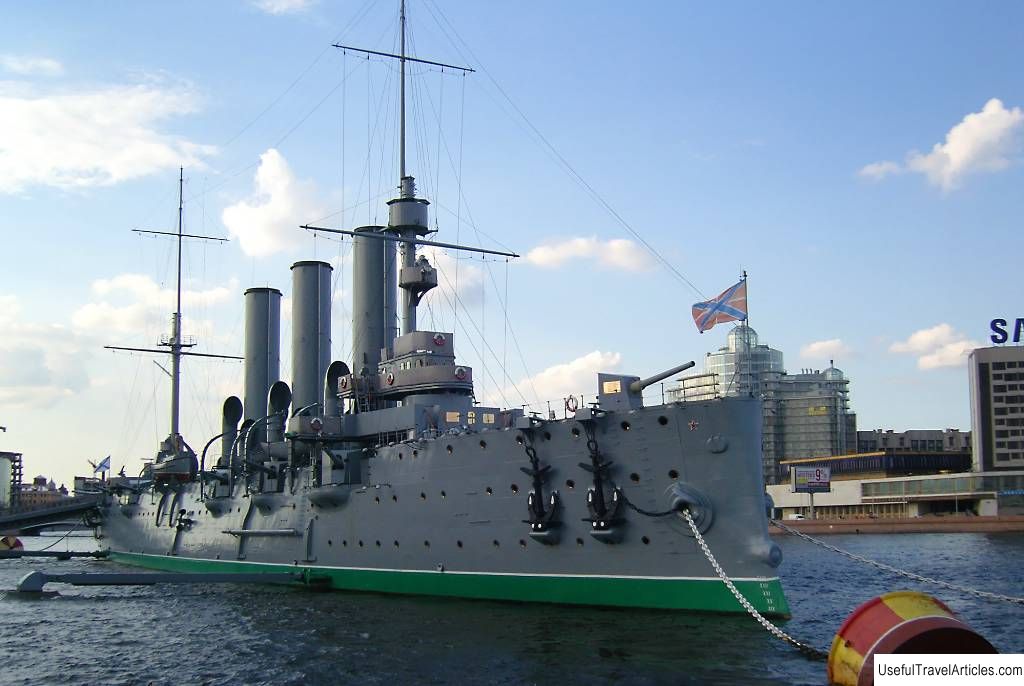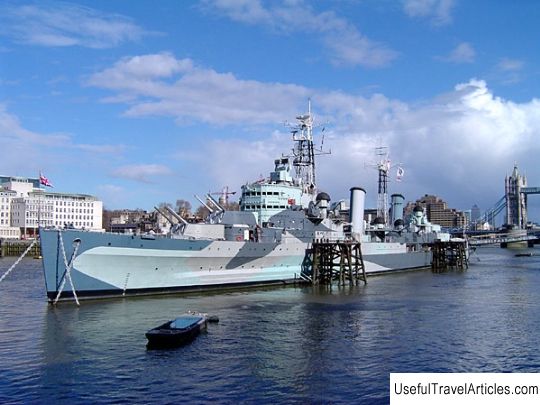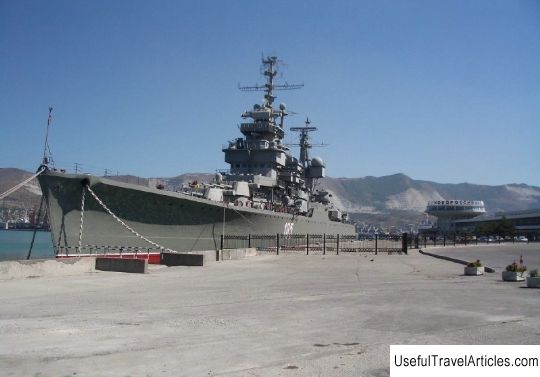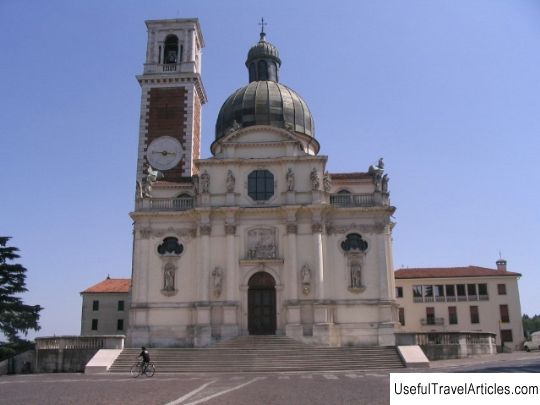Cruiser ”Aurora” description and photo - Russia - St. Petersburg: St. Petersburg
Rating: 8,9/10 (6894 votes) 
Cruiser "Aurora" description and photos - Russia - Saint Petersburg: Saint Petersburg. Detailed information about the attraction. Description, photos and a map showing the nearest significant objects. Photo and descriptionThe famous cruiser "Aurora" occupies a special place among the numerous historical sights of the northern Russian capital. She was named after one of the sailing frigates that became famous in the middle of the 19th century, during the Crimean War. The cruiser participated in the Tsushima naval battle (during the war between the Japanese and Russian empires). It was also used in the battles of the First World War. But first of all, the cruiser is known for its participation in the events of 1917: it was he who gave the signal to storm the Winter Palace. This signal was a blank shot. In the middle of the 20th century, the cruiser received the status of a museum ship. Construction of the cruiserAt the end of the 19th century, the geopolitical rivalry between Russia and England , the "German threat" also began to grow. The Russian empire was forced to strengthen the navy . In particular, construction began on several new cruisers, including the Aurora. The construction of the cruiser began in the mid-90s of the XIX century . The construction works were supervised by Eduard de Grofe . During the construction, various unforeseen difficulties arose. For example, it turned out that there was no special shipbuilding steel necessary to continue the work; she entered the plant late, which was one of the reasons for the delay in work on schedule. Too late a contract was signed for the supply of machines needed for the ship: it was not possible to agree with the suppliers, work out conditions acceptable to both parties. There was not enough manpower: at that time in the northern Russian capital, several warships were being built (including four battleships), workers and specialists were literally snapped up. There were also a number of other difficulties, but all of them were eventually successfully overcome. For a long time - almost a year - the cruiser remained unnamed. The name for him was chosen by the emperor . The monarch was offered eleven variants of the name of the ship; The king chose the name of the Roman goddess of dawn (Aurora). At the beginning of the 20th century, a test launch of the ship was made. This ceremony was accompanied by an artillery salute, the imperial couple watched the descent of the ship. The test was successful after which the construction of the cruiser continued (it was not finished yet). Soon the cruiser set off on its maiden voyage , which was very short. During this voyage, there were problems with the steering, one of the propellers was also damaged. The construction of the cruiser cost the Russian Empire about six and a half million rubles. Tests of the ship cruiser trials have begun . The first of them - the factory ones - were carried out with the following goals: it was necessary to check the operation of the main engines of the ship, as well as to eliminate inaccuracies in the compass readings (deviation). This was followed by official tests. During the first one, a defect in the steam engine was discovered. Also some other defects - smaller ones - made themselves felt. The plant was given two weeks to correct all these shortcomings. The next test was much more successful, but it also revealed some of the cruiser's shortcomings: during the check of the naval artillery, a dozen or so windows crashed - in the navigator's cabin and some other rooms ... Another test followed, revealing defects in boilers and machines . It was decided to conduct the next tests in six months, giving the builders of the cruiser time to correct all the shortcomings. The new test, carried out after the elimination of the found defects, went much better than all the previous ones, but still it was not without problems. The cruiser was never able to develop the maximum (contract) speed. However, the defects preventing the ship from sailing at such a speed turned out to be insignificant and easily removable. The ship became part of the Russian fleet. Cruiser service The cruiser was sent to the Far East . On board were five hundred and seventy people (sailors, officers, non-commissioned officers, conductors). On the way, the ship got into a terrible storm . The raging elements revealed many defects of the cruiser. In particular, water seeped through the windows, quite a lot of it appeared on the living deck. After renovation on a small limestone island, the ship continued to sail. But after a few days new difficulties began to arise: this time the problems were in the machine installation. I had to spend about half a month eliminating defects. Quite extensive repair work was carried out. At that time, the ship was standing near the Italian coast, specialists from among the local residents were involved in the repair. So, being periodically undergoing repairs due to new and new defects that were discovered, the ship gradually reached East Africa. There, a message was received about the beginning of the war with the Japanese Empire . An order was received to return to Russia. Soon after her return, the ship was included in the Second Squadron of the Pacific Fleet . The cruiser was painted in the colors of this squadron: the sides became black, and the pipes are light yellow. The ship as part of the squadron again went to the Far East. The campaign began extremely unsuccessfully: not far from the English coast, the cruiser was mistakenly fired upon by the ships of the Russian fleet (they took it for an enemy destroyer). The ship's priest was seriously wounded, which later served as the cause of his death. During the voyage, the cruiser crew showed themselves from the best side - close-knit and diligent. There were practically no violations of discipline, although the swimming was very difficult. The ship's crew was an example to the rest of the squadron's crews. It was during this campaign that the ship took part in the famous Battle of Tsushima . In battle, the cruiser received a lot of damage. The next bright stage in the history of the ship - World War I . During this period, the cruiser was used as a patrol ship, participated in campaigns to study various fairways, and supported the Russian ground forces with the fire of its artillery. The ship was attacked by enemy seaplanes, but these attacks were all unsuccessful. Cruiser during the Revolution Not long before the revolutionary events in the northern Russian capital, the cruiser was parked near one of the city's factories: the ship needed repairs. The ship's captain, Mikhail Nikolsky , was extremely worried that during this long stay, the political views of the crew could change: there was active revolutionary agitation in the city. In his report to the management, the captain expressed fears that the cohesion of the crew could be a negative factor if the agitators were able to sow the seeds of revolutionary sentiment on board the ship. To avoid this, the captain introduced strict procedures on the ship during the stay, he set many restrictions for the crew. It should be noted that both the sailors and the officers did not like the captain (some even openly), but still, until the February revolutionary events, they remained completely faithful to their official duty. Fearing a possible mutiny on the ship, the captain opened fire on the sailors, who were behaving defiantly. One of them died, two were slightly injured. Later, during the revolutionary events, the captain was shot by the rebels. The command of the cruiser was transferred to the ship committee , elected by voting. Rallies were held on the ship, an increasing number of sailors joined the Bolshevik Party. The renovation work was carried out extremely slowly. However, by mid-autumn they were supposed to be completed, after which the ship was to go to sea. Upon learning of this, the leadership of the Bolshevik Party opposed - the cruiser and his crew were needed by the revolutionaries. As you know, the cruiser played an important role in the October revolutionary events: at his signal, the assault on the Winter Palace was launched. The signal was a blank shot . But the following should be noted: today, some historians believe that the assault began even before the shot, which had meaning only as an act of intimidation of the defenders of the palace. A few months after the events described, the ship was again repaired. At that time, opponents of the revolution made two attempts to deal with the crew of the cruiser: in the first case, they tried to poison the sailors and officers, in the second, they planted a land mine on the ship (the shell was neutralized). From the training ship to the ship- Museum In the 20s of the XX century, the cruiser began to be used as training ship . During this period of time and in the 30s of the XX century, he made several voyages. During wartime, the ship took part in the defense of Kronstadt and was regularly bombarded by enemy artillery. In the mid-40s, it was decided to turn the ship into a museum . Currently, on board the cruiser, you can see an exhibition dedicated to his participation in three wars. The ship's temple was restored, which was abolished in the post-revolutionary period. This temple is active, although services are not often held there. Notes
         We also recommend reading Gardens of Sabatini (Jardines De Sabatini) description and photos - Spain: Madrid Topic: Cruiser ”Aurora” description and photo - Russia - St. Petersburg: St. Petersburg. |




